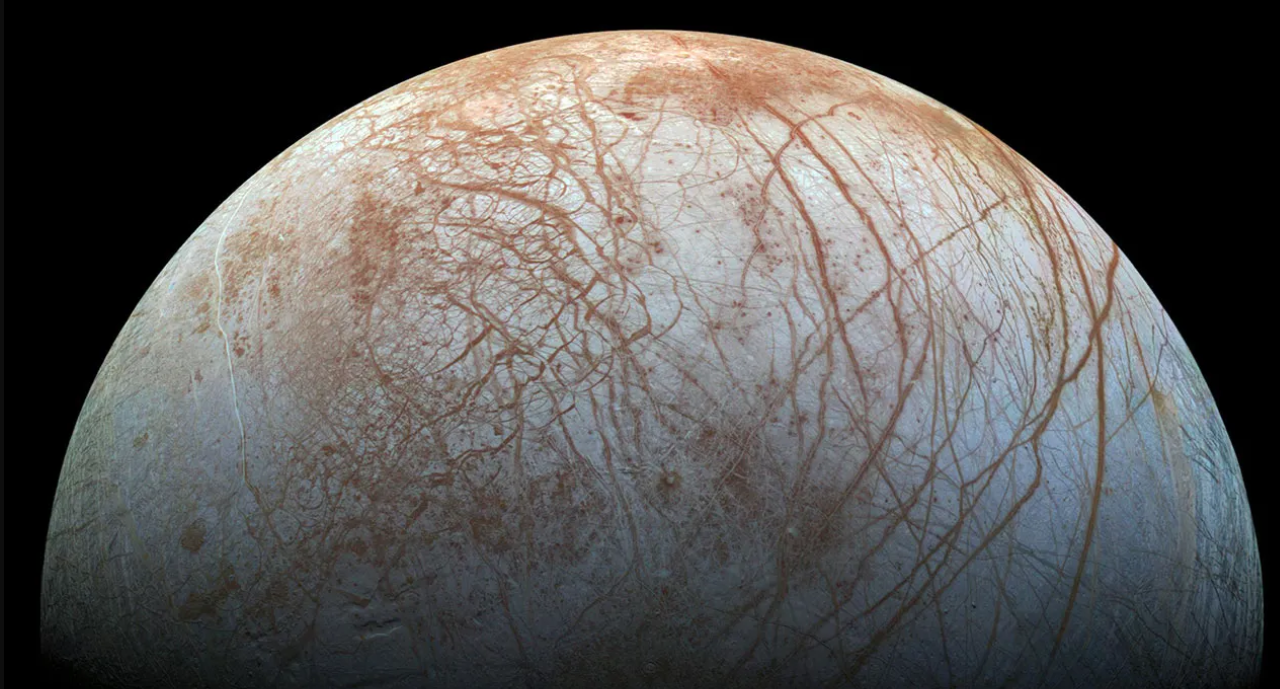Europa, Jupiter's fourth-largest moon
Europa, Jupiter’s fourth-largest moon, has been hiding something beneath its frozen surface, as evidenced by an image of a salty ocean taken by NASA’s Juno mission.
Europa has a liquid iron core
Europa has a liquid iron core, a scant atmosphere of oxygen, and a magnetic field that makes it more like a planet than a moon. With an ocean beneath its 11 miles (18 km) thick glacial cover, it now looks that the salty ocean can boil up through the ice because of Juno.
The Juno photo was the first high-resolution picture of Europa
The Juno photo was the first high-resolution picture of Europa seen since the Galileo mission from NASA visited the planet in 2000. The photos demonstrate that the icy crusts at the moon’s north and south poles are not what scientists previously believed. It appears that Europa’s icy crust is currently floating freely and orbiting the moon.
The hummocks, ridges, ice blocks, and dark reddish-brown material that make up Europa’s topography are known as “the Platypus” features. Scientists currently believe that this is the location where pockets of saltwater from the moon’s underground ocean collect due to Europa’s ice crust.
We can make out potential stains, believed to be deposits from saltwater plumes rising to the surface from Europa’s ocean, 31 miles (50 km) above “the Platypus”.
Two more missions are slated for Europa, although Juno’s mission expires in 2025. NASA’s Europa Clipper is scheduled to launch later this year and arrive in 2030. Launched last year, the European Space Agency’s Juice (Jupiter Icy Moons Explorer) will arrive in 2031 and tour Ganymede, Europa, and Callisto, three of Jupiter’s moons.

